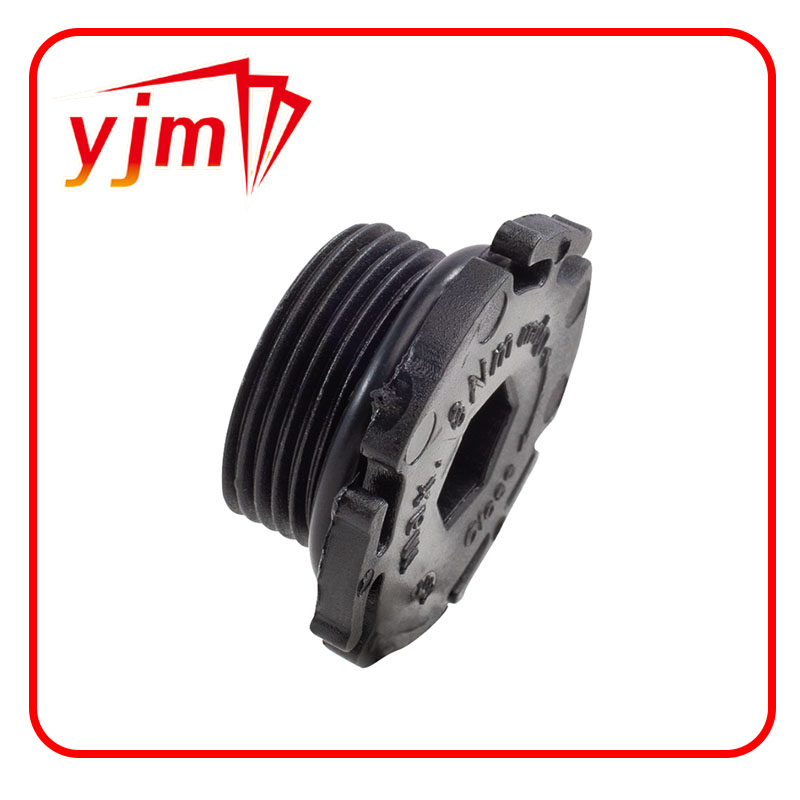Understanding the Function and Importance of O-Rings in Sealing Applications
The O-Ring A Simple Component with Significant Impact
In the world of engineering and design, sometimes it’s the simplest components that play the most critical roles. One such example is the O-ring, a ubiquitous element in various industries. This small, circular rubber or thermoplastic sealing device is designed to prevent the escape of fluids or gases, ensuring the integrity of systems wherever they are employed.
Understanding the O-Ring
An O-ring is essentially a loop of elastomeric material with a circular cross-section, which allows it to compress when inserted into a groove. This compression creates a seal that fills the space between two mating surfaces, effectively preventing leakage. O-rings are known for their versatility, durability, and ease of installation, making them ideal for applications ranging from automotive engines to aerospace technologies.
Applications Across Industries
O-rings are indispensable in numerous fields. In the automotive industry, they are used in engines, fuel systems, and braking systems to prevent leaks that could lead to failures or hazardous situations. The oil and gas sector relies on O-rings to maintain the integrity of pipelines and extraction equipment, preventing costly spills and environmental damage.
In aerospace, O-rings are critical in ensuring the safety and reliability of various systems. For instance, they are used in hydraulic systems of aircraft, where the failure of a single O-ring can have catastrophic consequences. This was demonstrated in the tragic Challenger Space Shuttle disaster in 1986, where the failure of an O-ring in the solid rocket booster led to the loss of the shuttle and its crew. This incident underscored the importance of proper material selection and testing for O-rings in high-stakes applications.
Material Considerations
o ring o ring

The materials used for O-rings vary depending on the application and the media they will encounter. Common materials include nitrile rubber (NBR), which is resistant to petroleum-based oils and fuels; fluoroelastomer (FKM), which offers high temperature and chemical resistance; and silicone, which performs well in high-temperature scenarios but may not be suitable for oily environments.
Choosing the right material is crucial, as it directly affects the performance and longevity of the O-ring. Engineers must consider factors such as temperature range, chemical compatibility, and pressure levels to ensure that the selected O-ring meets the operational demands of the system.
Advantages of Using O-Rings
The advantages of O-rings extend beyond their sealing capabilities. They are cost-effective, easy to manufacture, and can be produced in various sizes and shapes, accommodating a wide array of design requirements. Their simplicity also means that maintenance is typically straightforward, as replacing a worn or damaged O-ring is usually a matter of removing the old one and fitting a new one.
Moreover, O-rings are lightweight, which is particularly advantageous in applications where minimizing weight is essential, such as in aerospace and automotive designs. Their ability to maintain a reliable seal under varying conditions also contributes to the safety and efficiency of mechanical systems.
Conclusion
In conclusion, the O-ring is a small but mighty component that plays a pivotal role in the functionality and safety of countless systems across various industries. Its simple design belies its significance; the improper selection or failure of an O-ring can lead to serious consequences. As technology advances, the materials and designs of O-rings continue to evolve, ensuring that they remain relevant and effective in meeting the complex demands of modern engineering challenges. Understanding the importance of this humble component not only highlights the intricacies of mechanical design but also serves as a reminder of the value of reliability in engineering.
-
Understanding the Front Main Engine Seal: Purpose, Maintenance, and Installation
News Jul.29,2025
-
Understanding O-Rings and Seal Rings: Types, Applications, and Custom Solutions
News Jul.29,2025
-
Understanding Crankshaft Oil Seals: Rear Seals, Pulley Seals, and Their Role in Engine Integrity
News Jul.29,2025
-
The Importance of Front and Rear Crankshaft Seals in Engine Performance and Oil Management
News Jul.29,2025
-
Crank Oil Seals: Functions, Types, and Cost Considerations in Engine Maintenance
News Jul.29,2025
-
A Comprehensive Guide to O-Rings and Seals: Types, Materials, and Global Applications
News Jul.29,2025
-
Mastering Diesel and Performance Engine Maintenance: A Guide to Critical Oil Gaskets
News Jul.28,2025
Products categories















